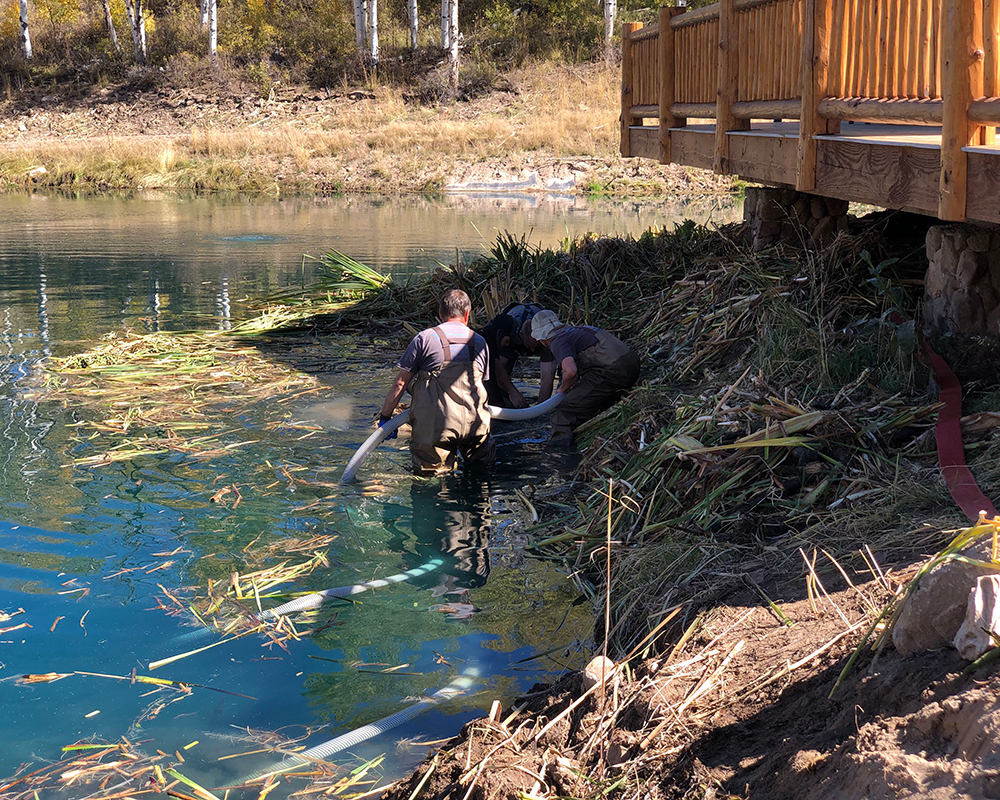Pond and Lake Dredging – This option is available for larger bodies of water that it doesn’t make sense or not possible to drain. We have the equipment and the scuba divers to dredge out the sediments and materials that your pond has accumulated over the years.

Ponds are captivating aquatic ecosystems that provide numerous environmental benefits, including wildlife habitats, water storage, and recreational spaces. However, over time, these tranquil water bodies can become burdened with accumulated sediment, weeds, and other pollutants, compromising their health and functionality. Pond dredging, the process of removing excess sediment and debris, plays a crucial role in preserving and revitalizing these essential water features. In this article, we will explore the significance of pond dredging, its benefits, and the methods employed in this restoration process.
Understanding Pond Dredging
Pond dredging involves the removal of accumulated silt, organic matter, debris, and vegetation from the bottom of a pond or lake. Sedimentation is a natural process in which soil particles, nutrients, and organic material settle at the bottom of water bodies over time. While a certain level of sediment is normal, excessive buildup can lead to a range of problems such as reduced water depth, decreased water quality, diminished aquatic life, and increased risk of flooding.
Benefits of Pond or Lake Dredging
Improved Water Quality: Sediment accumulation can degrade water quality by releasing nutrients and contaminants into the water, leading to excessive algae growth and decreased oxygen levels. Dredging removes these pollutants, restoring water quality and creating a healthier ecosystem for aquatic life.
Enhanced Wildlife Habitat: Ponds are home to a diverse array of plants and animals. Excessive sedimentation can smother aquatic plants, limit spawning areas, and disrupt the habitat for fish, amphibians, and invertebrates. Dredging opens up the pond’s bottom, providing suitable habitats and promoting biodiversity.
Increased Water Storage Capacity: Over time, sediment deposition can reduce the water-holding capacity of ponds. Dredging removes accumulated sediment, restoring the original depth and volume, thereby maximizing water storage capacity. This becomes particularly crucial during periods of drought or heavy rainfall, helping to prevent flooding or water shortages.
Prevention of Eutrophication: Excessive sedimentation and nutrient enrichment contribute to eutrophication, a process where bodies of water become excessively rich in nutrients, leading to harmful algal blooms and oxygen depletion. Pond dredging reduces nutrient levels, mitigating eutrophication and maintaining a balanced ecosystem.
Pond dredging is a vital practice for maintaining healthy and functional water bodies. By removing accumulated sediment, debris, and pollutants, pond dredging restores water quality, enhances wildlife habitats, increases water storage capacity, and prevents eutrophication. Whether through mechanical, hydraulic, or sediment removal bag methods, dredging ensures the preservation and revitalization of these valuable aquatic ecosystems. By prioritizing pond dredging, we can safeguard these natural treasures for future generations to enjoy and benefit from.


